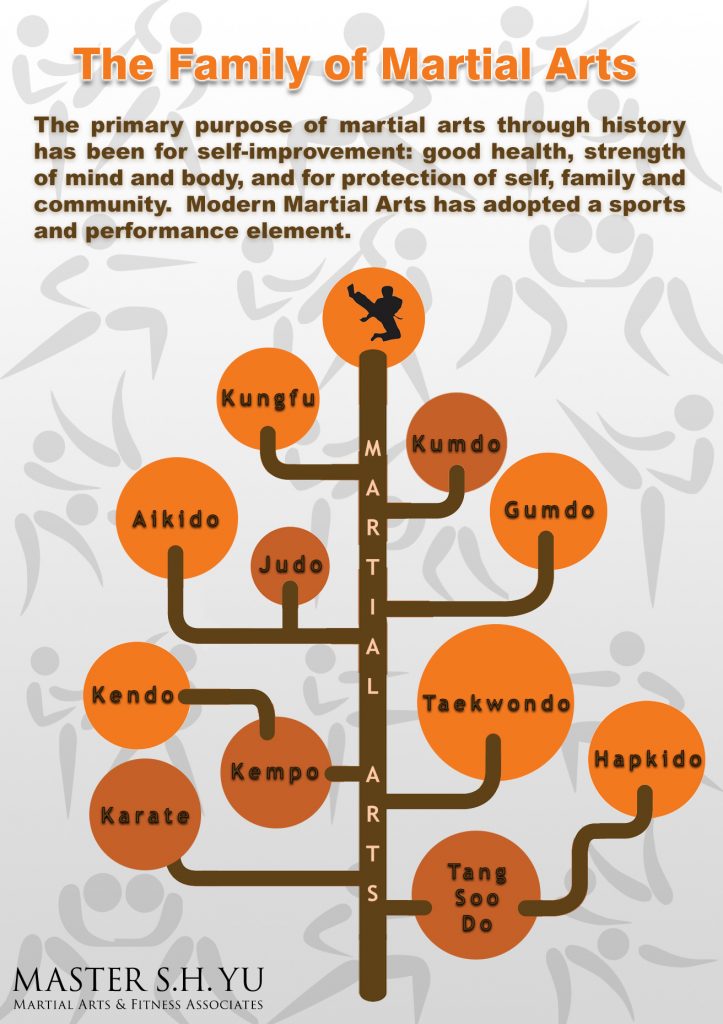Demystifying The Various Fighting Style Styles: From Martial Arts To Taekwondo
Demystifying The Various Fighting Style Styles: From Martial Arts To Taekwondo
Blog Article
Authored By- read more
Are you tired of sensation bewildered by the huge globe of martial arts? With numerous designs to select from, it can be very easy to obtain lost in a sea of punches, kicks, and mystical names. But concern not!
This discussion will certainly demystify the different martial arts styles, taking you on a trip from the effective strikes of Martial arts to the dynamic kicks of Taekwondo. Prepare to reveal the origins, methods, and viewpoints behind these old art forms.
So, tighten your belt and prepare to embark on an informing exploration right into the captivating globe of martial arts.
Origins of Martial Arts Styles
The origins of fighting styles styles can be mapped back to old people and their need for self-defense and fight methods. Throughout history, various societies created their own distinct methods of combating, each with its very own collection of methods and ideologies.
In China, as an example, fighting styles styles such as Martial art and Tai Chi were developed as a means of protection and improving physical and mental wellness.
In Japan, the samurai warriors created styles like Martial arts and Judo, focusing on technique, accuracy, and mastery of the body.
In a similar way, in Korea, Taekwondo emerged as a martial art emphasizing high kicks, fast activities, and psychological perseverance.
These very early human beings laid the foundation for the diverse selection of martial arts styles that exist today, each with its very own abundant history and social significance.
Strategies and Training Techniques
To master martial arts designs, experts should find out various strategies and training techniques.
Strategies are the specific activities and actions utilized in fight, such as strikes, kicks, throws, and blocks. https://selfdefensemanvswoman78742.vblogetin.com/38126757/discover-just-how-martial-arts-can-transform-your-body-rise-toughness-and-flexibility-as-you-master-self-defense-methods-click-currently-for-the-ultimate-physical-makeover fighting styles designs have their own special collection of techniques that experts have to master with strenuous training.
Educating methods differ depending on the style, yet they usually include a mix of physical fitness, drills, sparring, and forms.
Physical conditioning is critical to construct strength, flexibility, and endurance. Drills aid practitioners improve their strategies and improve their speed and precision.
Sparring permits professionals to practice their techniques in a regulated, realistic environment. click here for more , additionally called kata, are deliberate series of activities that aid practitioners create muscle memory and focus.
Approaches and Concepts
Checking out the philosophies and concepts of fighting styles styles can provide you with a deeper understanding of your chosen self-control. Each fighting style has its own unique viewpoint and set of assisting principles that shape the way it's exercised.
For instance, Karate highlights technique, respect, and self-discipline. It instructs experts to focus their minds and bodies, allowing them to protect themselves while keeping a sense of internal tranquility.
On the other hand, Taekwondo positions a strong focus on speed, dexterity, and versatility. Its principles are rooted in the tenets of politeness, integrity, determination, self-control, and resolute spirit.
Conclusion
Now that you've explored the origins, strategies, and philosophies of numerous martial arts styles, you have a deeper understanding of these old techniques.
Visualize a young karate pupil, experimenting undeviating resolution and focus, appearing boards with an effective punch.
Their trip showcases the commitment and stamina called for to grasp a martial art, advising us that with discipline and willpower, anything is feasible.
